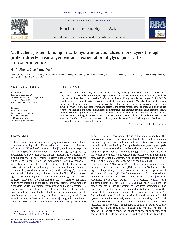摘要
Multivalent protein binding plays an important role not only in biological recognition but also in biosensor preparation. Infrared reflection absorption spectroscopy and surface plasmon resonance techniques have been used to investigate concanavalin A (Con A) binding to binary monolayers composed of 1,2-di-O-hexadecyl-sn-glycerol and derived glycolipids with the mannose moieties. The glycolipids in the binary monolayers at the air-water interface underwent both lateral rearrangement and molecular reorientation directed by Con A in the subphase favorable to access of the carbohydrate ligands to protein binding pockets for the formation of multivalent binding sites and the minimization of steric crowding of neighboring ligands for enhanced binding. The amounts of specifically bound proteins in the binary monolayers at the air-water interface were accordingly increased in comparison with those in the initially immobilized monolayers at the air-water interface. The directed rearranged binary monolayers with multivalent protein binding were preserved for the preparation of biosensors.
- 出版日期2011-9
- 单位南京大学
